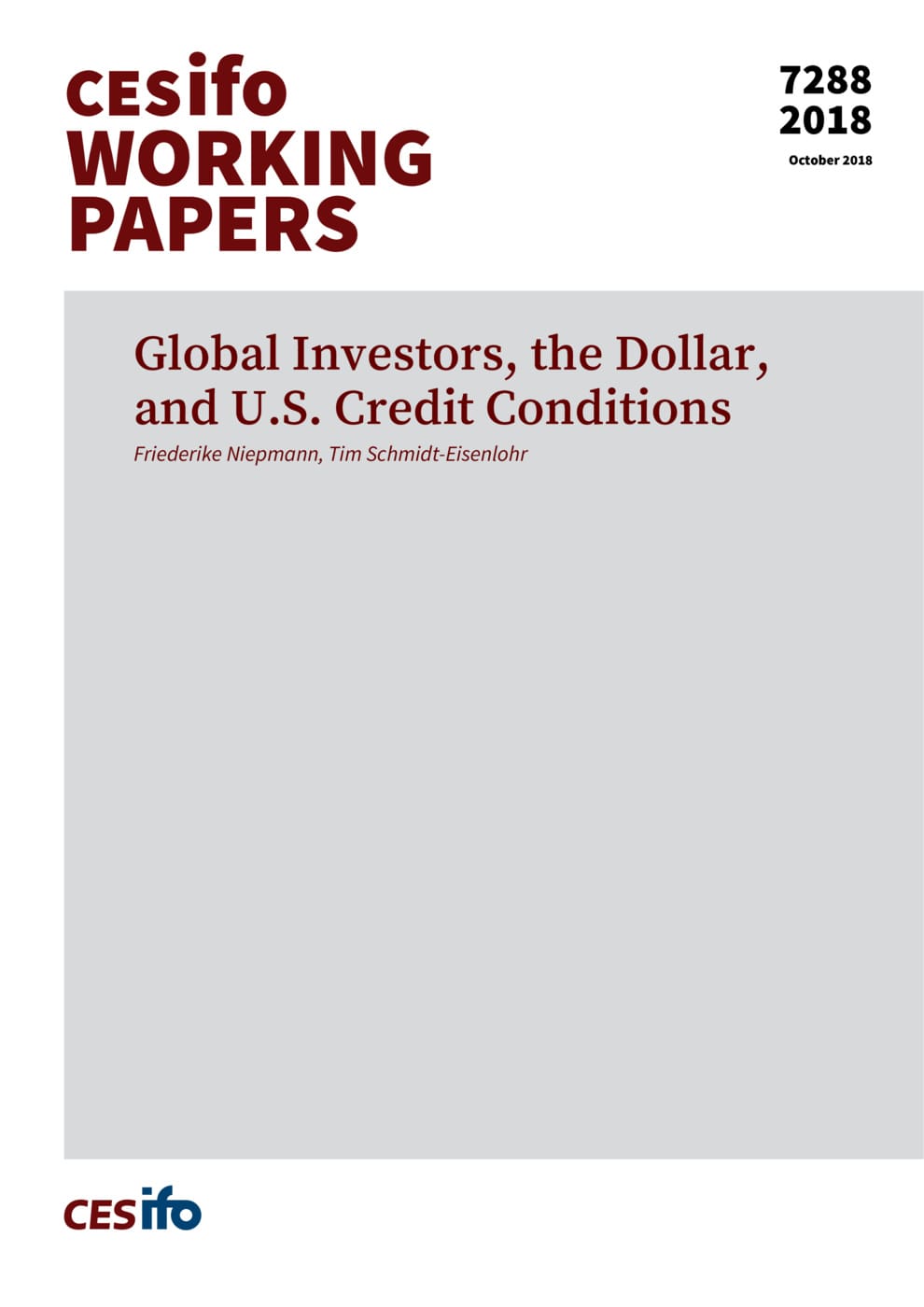Global Investors, the Dollar, and U.S. Credit Conditions
CESifo, Munich, 2018
CESifo Working Paper No. 7288

This paper documents that an appreciation of the U.S. dollar is associated with a reduction in the supply of commercial and industrial loans by U.S. banks. An increase in the broad dollar index by 2.5 points (one standard deviation) reduces U.S. banks’ corporate loan originations by 10 percent. This decline is driven by a reduction in the demand for loans on the secondary market where prices fall and liquidity worsens when the dollar appreciates, with stronger effects for riskier loans. Today, the main buyers of U.S. corporate loans—and, hence, suppliers of funding for these loans—are institutional investors, in particular mutual funds, which experience outflows when the dollar appreciates. A shift of traditional financial intermediation to these relatively unregulated entities, which are more sensitive to global developments, has led to the emergence of this new channel through which the dollar affects the U.S. economy, which we term the secondary market channel.
Monetary Policy and International Finance
Fiscal Policy, Macroeconomics and Growth